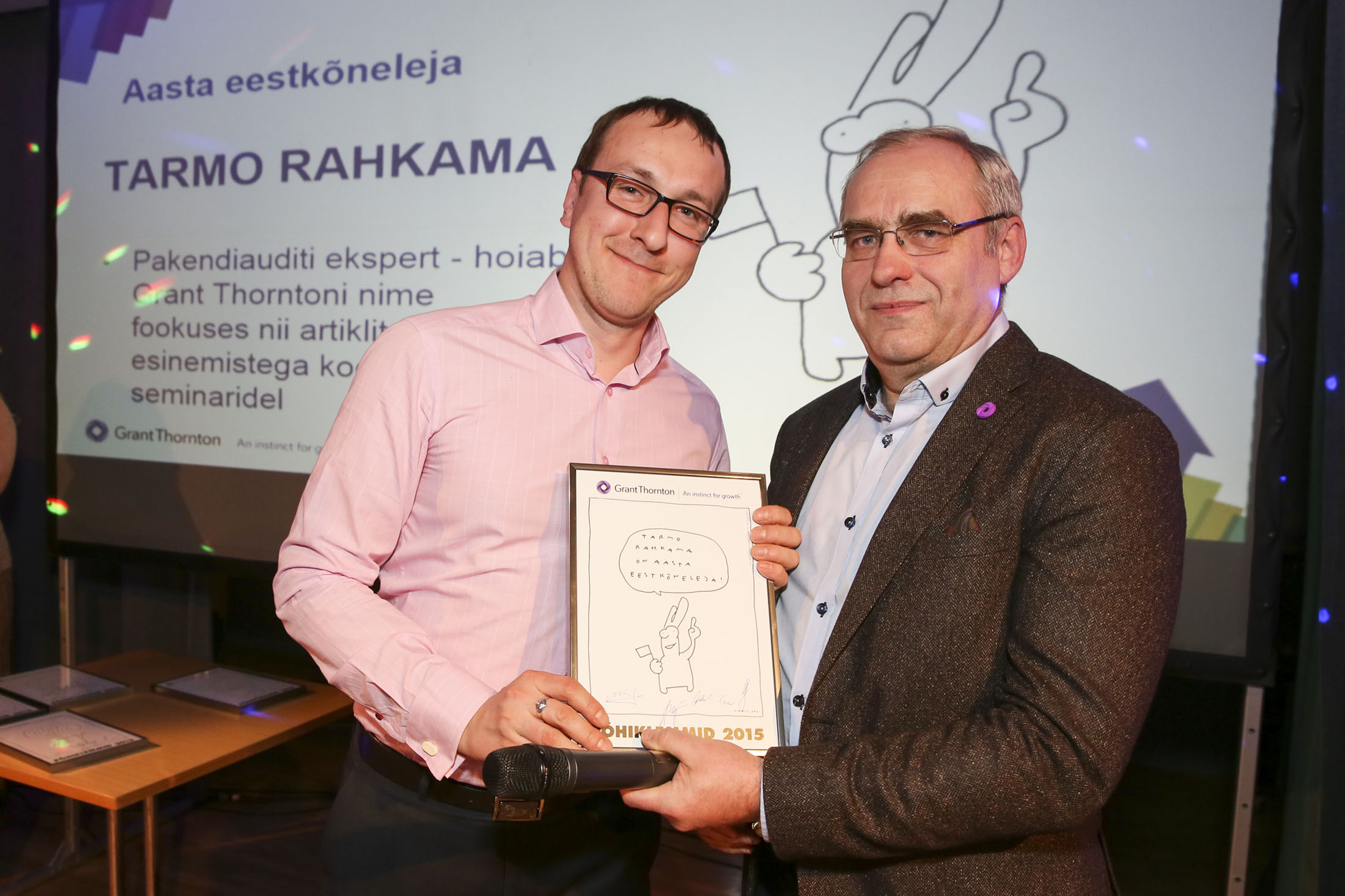Tonnes of paper
Auditing requires going through a lot of accounts and other documents, but in the 1990s, and in some companies even a little later, such data only existed on paper. This meant that the auditors and their assistants had to travel to the client’s premises and set themselves up for some time in order to go through all of the necessary files. True, there were also clients who bussed their papers to the auditor, but they were few and far between. Considering that Rimess had clients all over Estonia but was based in Tallinn (and from 1995 also in Võru), auditing clients who were based further away meant that the auditors had to stay there for a few days, sometimes even a week. Later, information was also exchanged with clients using faxes and floppy disks, the ancestors of today’s memory sticks.
Sworn Auditor and Partner Tarmo Rahkama (left) is also an expert in auditing packaging and was awarded the title of Advocate of the Year for this in 2015. Pictured with Mati Nõmmiste at the Christmas party in the Writers House.
The second half of June was – and still is – a particularly busy time, so that audited annual reports can be delivered to the Commercial Register by the last day of January at the latest. Prior to 2010, when the obligation to file reports with the register electronically came into force, the end of June also meant a lot of paperwork and administration.
Sworn Auditor and Partner Tarmo Rahkama recalls: “Clients would print out their annual reports, sign them and bring them in to Rimess. We added our auditor’s opinion with our signature and stamp. We only had the one stamp, so we often had to wait our turn until the colleague who was using it was done with it. The report was then taken to the Commercial Register. The tension really ratcheted up if an error was found in the report: a correction had to be made, it had to be reprinted and signed and the client then had to send the report back to Rimess. So the end of June was a very busy time not only for us, but also for couriers!”


